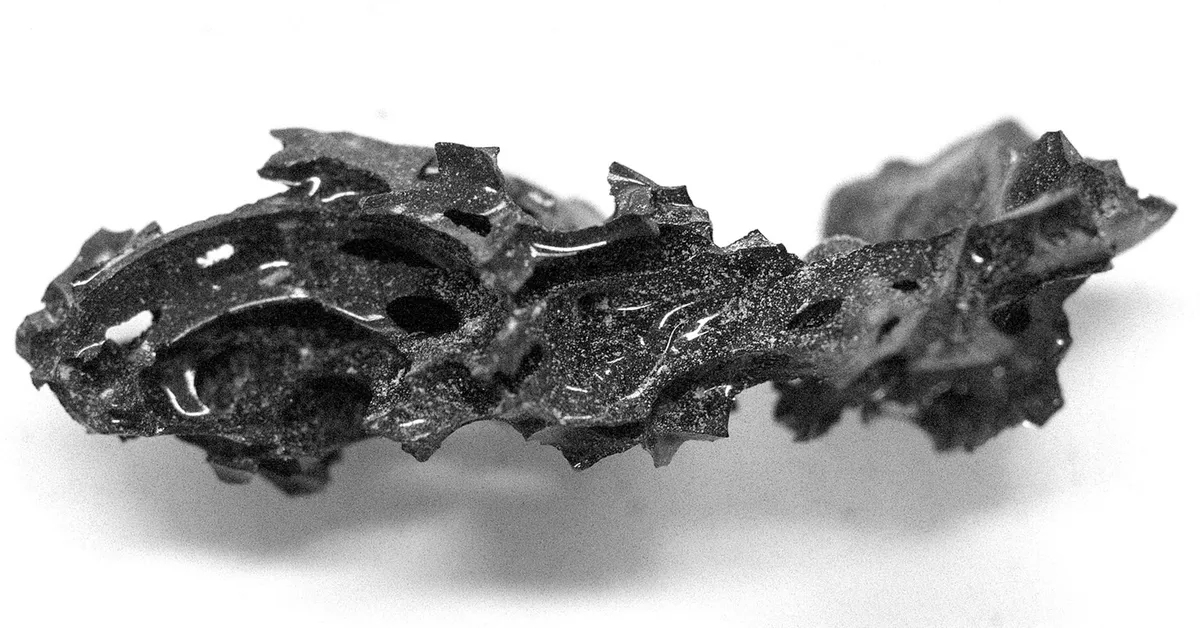
On February 27, 2023, researchers made a surprising discovery while examining the remains of a man who tragically died in bed during the catastrophic eruption of Italy’s Mount Vesuvius in 79 AD. The remains, found in the ancient city of Herculaneum, contained dark fragments resembling obsidian inside the skull, leading to the astonishing conclusion that the eruption had transformed the man's brain into glass.
This remarkable case is the only one recorded in history where human brain material underwent vitrification, a process where organic material is converted into glass. Researchers attributed this phenomenon to a sudden and intense ash cloud that enveloped the city along the Bay of Naples, killing its inhabitants almost instantly. The study revealed that the vitrification occurred through a rapid exposure of the brain to extreme temperatures, exceeding 510 degrees Celsius (950°F), followed by a swift cooling process.
The research team conducted rigorous analyses that confirmed the glass-like nature of the skull fragments and detailed their physical properties. Historical records indicate that the eruption obliterated the flourishing Roman cities of Pompeii and Herculaneum, burying thousands of victims beneath thick layers of volcanic material and mud. Remarkably, the only other known instances of organic glass are sporadic cases of vitrification of wood, observed at both Herculaneum and Pompeii. However, no other examples of vitrified human or animal remains have been documented worldwide.
The remains of the young man, believed to have served as the custodian of the College of the Augustales—a building dedicated to the cult of Emperor Augustus—were first discovered in the 1960s. A re-examination of the remains in 2018 revealed the shocking glassy fragments nestled within the volcanic ash inside the skull. Researcher Vincenzo Petrone recounted a moment of revelation: "Under the lamp, I suddenly saw small glassy remains glittering in the volcanic ash that filled the skull."
Upon further inspection, the glassy remains exhibited a black appearance with shiny surfaces reminiscent of obsidian, a natural glass formed from rapidly cooled lava. However, unlike true obsidian, the fragments discovered in Herculaneum were extremely brittle and easily crumbled. Previous studies published in scientific journals indicated that these glass fragments contained proteins and fatty acids typical of human brain tissues, showcasing an exceptionally well-preserved central nervous system with interconnected nerve cells.
This groundbreaking research not only sheds light on the unique case of brain vitrification but also enhances our understanding of the tragic events that unfolded following the eruption of Mount Vesuvius. The findings suggest that the immediate cause of death for the victims was the arrival of a hot ash cloud, emphasizing the need for further studies on the behavior of such ash clouds, which remain poorly understood yet highly hazardous. Guido Giordano, a volcanologist and the study's first author from Roma Tre University, highlighted the urgency of this research.
As the evidence suggests, victims in Herculaneum, including the college custodian, faced instantaneous death from the intense impact of the volcanic ash surge. The study illustrated that the postures of the victims' bodies indicated they did not have time to notice or suffer any distress. This research provides crucial insights into the catastrophic effects of the eruption and the tragic fate of Herculaneum’s residents.
For more updates on archaeological discoveries and historical research, sign up for our newsletter.